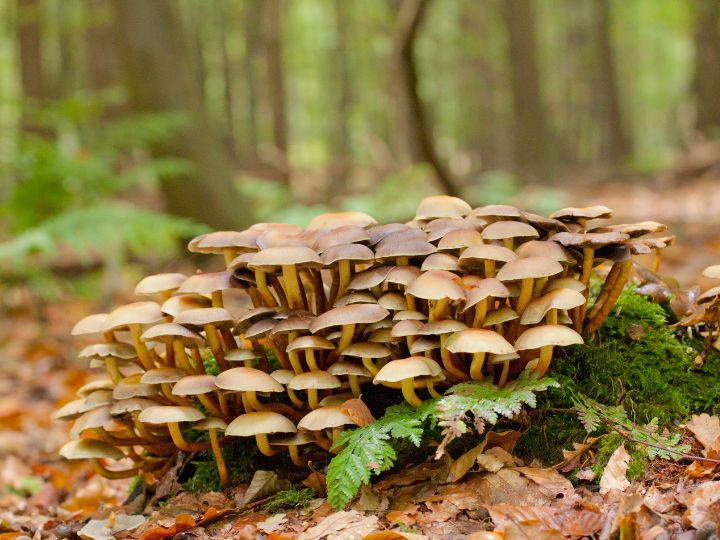Over the past decade, psychedelics have gained renewed attention. Substances like LSD (lysergic acid diethylamide) and psilocybin mushrooms, better known as “shrooms”, are often portrayed as natural, harmless, or even therapeutic.
While research is ongoing, what often gets overlooked is the risk that psychedelics carry when used outside a clinical or controlled setting. For some, what begins as an occasional experiment can turn into a harmful pattern of use.
Although LSD and shrooms are not considered physically addictive in the same way as opioids or alcohol, they can still lead to psychological dependence, risky behaviors, and long-term complications.
Understanding the similarities and differences between these substances, as well as how misuse develops, is an important step in prevention and recovery.
LSD vs. Shrooms: Key Differences
While both LSD and shrooms are psychedelics, they differ in important ways.
LSD (Acid):
- Origin: A synthetic hallucinogen, discovered in the 1930s.
- Duration: Effects can last 8–12 hours.
- Experience: Known for intense visual hallucinations, distortions of time, and heightened emotions.
- Risks: Because LSD is produced in illicit labs, doses can be highly unpredictable. A “hit” may be stronger, or weaker, than expected, leading to overwhelming experiences.
Psilocybin Mushrooms (Shrooms):
- Origin: Naturally occurring mushrooms containing psilocybin, used in spiritual practices for centuries.
- Duration: Shorter than LSD, typically 4–6 hours.
- Experience: Many describe shroom trips as more “organic” or “spiritual” compared to LSD, though they can still produce anxiety or paranoia.
- Risks: Potency varies widely depending on the strain and how the mushrooms are prepared, making dosing difficult to predict.
Although their effects differ, both substances alter consciousness in powerful ways. Users often seek them for introspection, creative inspiration, or escape, but these same qualities can make them risky.
From Use to Abuse: Where the Line Blurs
Occasional psychedelic use may not always escalate into a problem, but the shift from use to abuse can happen quietly.
- Recreational Use may involve experimenting a few times a year, often in social or spiritual contexts.
- Problematic Use develops when someone begins using psychedelics to cope with daily stress, depression, or trauma. They may start seeking the “trip” as an escape from reality, rather than facing life challenges directly.
Signs of Psychedelic Abuse include:
- Using more frequently to chase the same effects
- Mixing psychedelics with other drugs or alcohol
- Experiencing paranoia, panic attacks, or lingering anxiety after trips
- Neglecting responsibilities or relationships due to substance use
While LSD and shrooms do not cause physical withdrawal symptoms, the psychological pull can be strong. People may find themselves craving the altered state as a way to avoid painful emotions or unresolved issues.
Risks of Psychedelic Misuse
Psychedelics are often mistakenly viewed as “safe” because they aren’t physically addictive. However, misuse carries serious risks.
Mental Health Complications
Psychedelics can trigger or worsen conditions like anxiety, depression, and schizophrenia in vulnerable individuals. Some users experience panic attacks during trips that leave lasting psychological scars.
Hallucinogen Persisting Perception Disorder (HPPD)
A rare but serious condition where users experience flashbacks, visual disturbances, or paranoia long after drug use has ended.
Impaired Judgment and Risky Behavior
Under the influence, users may engage in unsafe activities, such as driving, unsafe sex, or reckless behavior, leading to accidents and long-term consequences.
Psychological Dependence
Even if physical withdrawal isn’t present, the emotional reliance on psychedelics can be just as harmful. People may convince themselves they cannot feel joy, creativity, or connection without them.
When Psychedelics Become a Crutch
For many, the appeal of LSD or shrooms lies in the promise of deeper self-awareness or healing. However, using psychedelics as a shortcut to emotional growth can backfire. Rather than addressing trauma or mental health challenges in healthy ways, individuals may turn to repeated trips to numb pain or seek meaning.
Over time, this pattern can lead to isolation, strained relationships, and avoidance of genuine therapeutic work. Instead of offering clarity, psychedelics may create confusion, instability, and dependence on fleeting states of consciousness.
Seeking Help for Psychedelic Misuse
Recognizing a problem is the first step toward recovery. If psychedelic use has shifted from curiosity to a coping mechanism, professional help is available.
Treatment options may include:
- Therapy: Cognitive-behavioral therapy (CBT) and trauma-informed care can address underlying issues driving substance use.
- Support Groups: Sharing experiences with others in recovery fosters accountability and encouragement.
- Holistic Care: Practices like mindfulness, exercise, and nutrition can restore balance without relying on substances.
- Rehabilitation Programs: Professional addiction recovery centers provide structured care, relapse prevention tools, and long-term support.
Conclusion
LSD and shrooms are powerful substances that alter perception and consciousness. While some people use them casually or in search of meaning, the risks of misuse are real. What starts as experimentation can turn into a reliance that harms mental health, relationships, and overall well-being.
If you or someone you love is struggling with psychedelic use, know that help is available. At Premier Addiction Recovery, a drug rehab in Florida, we provide compassionate, evidence-based treatment to guide individuals toward lasting healing.
Don’t wait until use becomes abuse. Reach out today to take the first step toward recovery.


